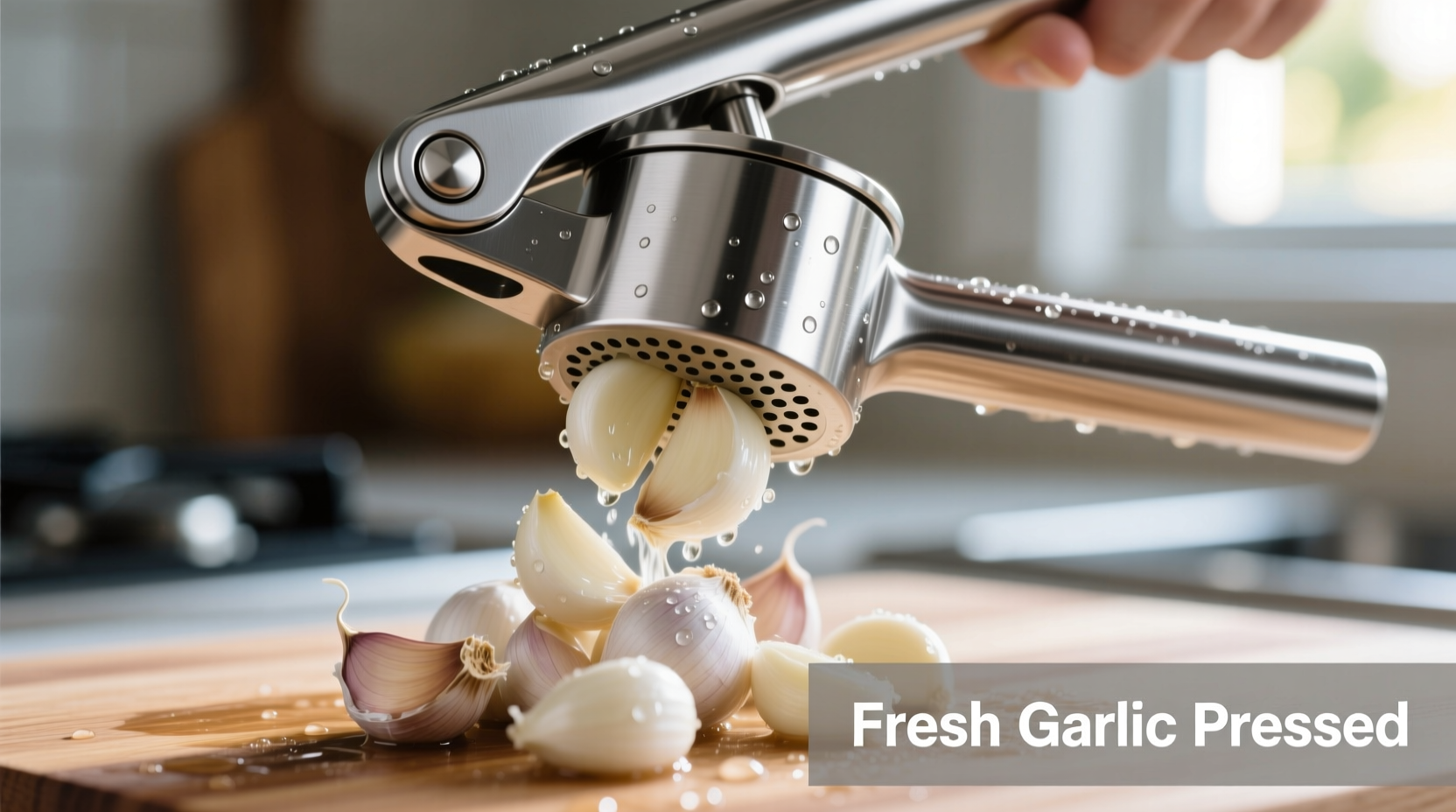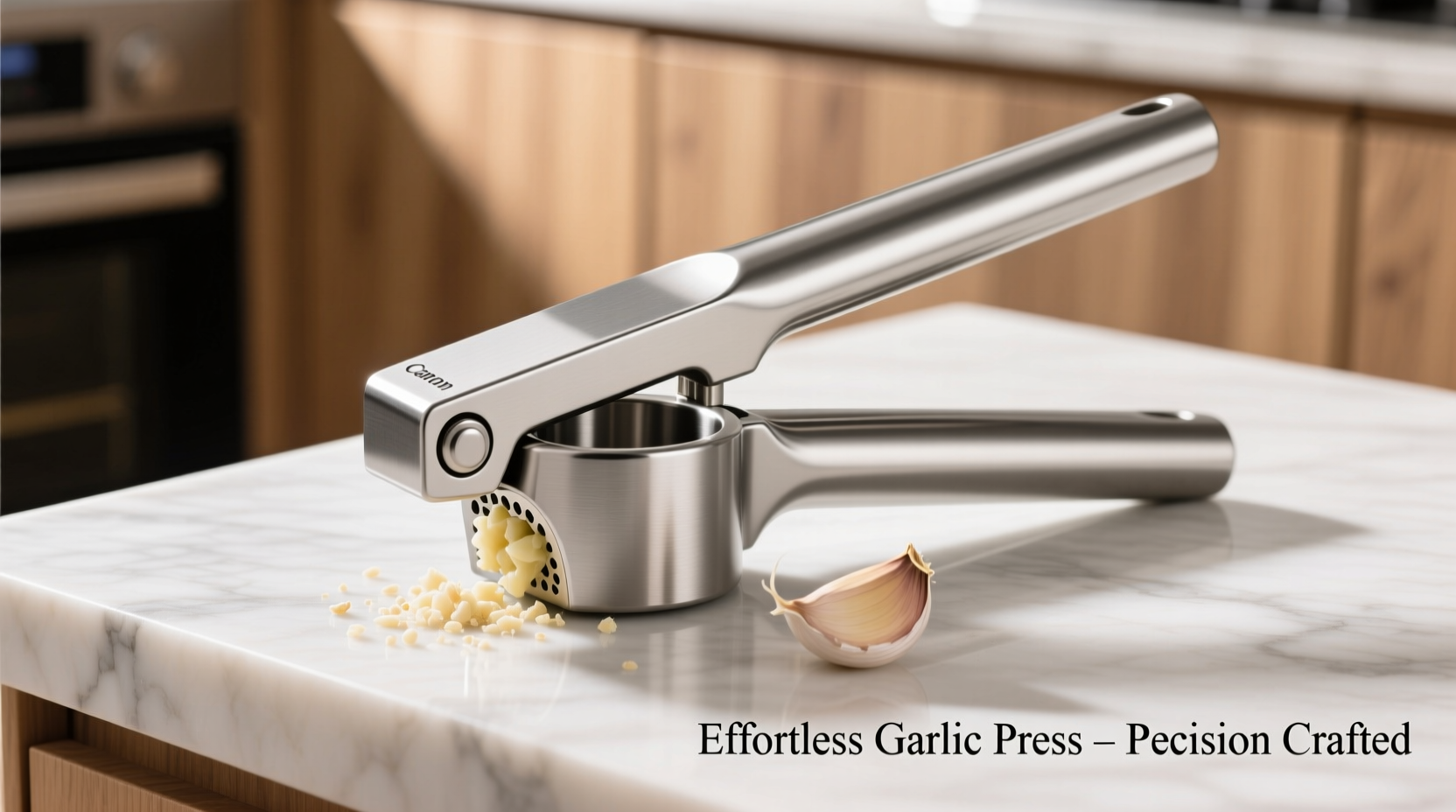Why Your Garlic Press Choice Matters More Than You Think
Garlic presses aren't just kitchen gadgets—they're flavor extraction tools that directly impact your cooking results. When properly selected and used, they release allicin, garlic's key bioactive compound, up to 30% more effectively than chopping alone according to National Institutes of Health research. The right press transforms how garlic integrates into your dishes, preventing bitter notes from oxidation while ensuring even distribution.
Garlic Press Materials: The Flavor Preservation Factor
Material composition significantly affects both garlic quality and press longevity. Aluminum models may react with garlic's sulfur compounds, creating off-flavors—a phenomenon documented by FDA food science researchers. Stainless steel maintains flavor integrity while resisting corrosion from garlic's natural acids.
| Material Type | Flavor Impact | Durability | Cleaning Difficulty |
|---|---|---|---|
| Stainless Steel | Preserves natural flavor | Excellent (10+ years) | Moderate |
| Aluminum | May create metallic notes | Fair (3-5 years) | Difficult |
| Plastic | Neutral but absorbs odors | Poor (1-2 years) | Easy |
| Silicone | Neutral flavor | Good (5-7 years) | Very easy |
Evolution of Garlic Press Design: From Simple Lever to Precision Tool
Garlic press technology has evolved significantly since the 1940s:
- 1940s-1970s: Basic cast aluminum designs with single-lever mechanisms requiring significant hand strength
- 1980s-1990s: Introduction of stainless steel models and dual-lever systems improving mechanical advantage
- 2000s: Ergonomic handles and non-slip grips addressing accessibility concerns
- 2010s-present: Precision-engineered chambers with optimized hole patterns for complete extraction
When a Garlic Press Outperforms Traditional Methods
Certain cooking scenarios particularly benefit from proper garlic press usage:
- Raw applications: Salad dressings and aiolis where even distribution is critical
- Quick-cooking dishes: Stir-fries where garlic must incorporate rapidly
- Delicate sauces: Preventing garlic chunks from overwhelming texture
- Accessibility needs: For cooks with limited hand strength or dexterity issues
However, professional chefs at Culinary Institute of America note that roasting or slow-sautéing whole cloves often produces superior flavor complexity for certain dishes.
The Professional Cleaning Method Chefs Swear By
Proper maintenance extends your press's life and prevents flavor contamination. Instead of struggling with small brushes:
- Immediately after use, place press in bowl of warm, soapy water
- Fill chamber with coarse salt and a splash of vinegar
- Work mechanism repeatedly to dislodge residue
- Rinse thoroughly under running water while operating press
- Air dry completely before storage to prevent moisture buildup

Three Practical Usage Techniques You're Missing
Most home cooks underutilize their garlic presses. Try these professional techniques:
- The root-end first method: Insert cloves root-end first for cleaner extraction
- Oil pre-treatment: Lightly coat press interior with olive oil before use for sticky varieties
- Chamber optimization: Use only one clove at a time for maximum pressure application
When You Might Not Need a Garlic Press
Consider these alternatives based on your cooking style:
- Microplane grater: For ultra-fine garlic incorporation in raw applications
- Traditional mincing: When you want visible garlic pieces in finished dishes
- Garlic rocker: For cooks who prefer manual control over extraction
According to University of Minnesota Extension, fresh garlic paste made by pressing maintains its flavor compounds longer than minced garlic when properly stored.
Final Selection Guidance Based on Your Cooking Style
Choose your ideal garlic press by matching to your primary cooking needs:
- Daily home cook: Mid-range stainless steel model with comfortable grip
- Professional results: Commercial-grade press with replaceable sieve plates
- Small kitchen: Compact press that stores easily in utensil drawer
- Arthritis concerns: Lever-style press requiring minimal hand strength











 浙公网安备
33010002000092号
浙公网安备
33010002000092号 浙B2-20120091-4
浙B2-20120091-4